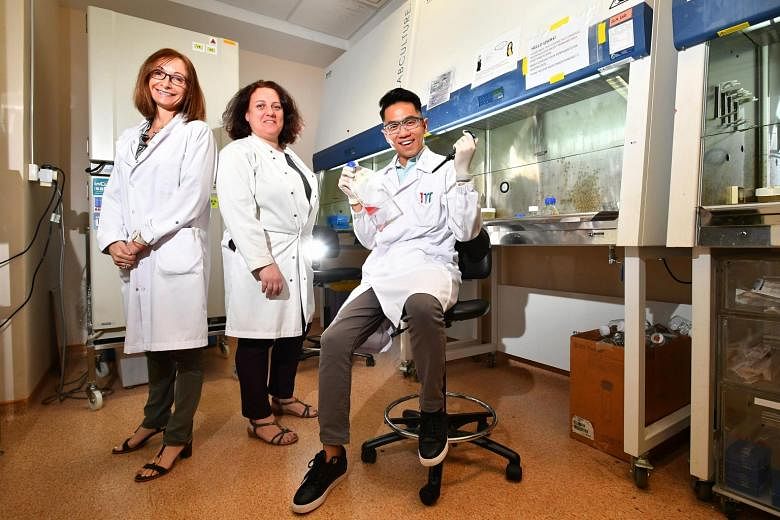SINGAPORE - In very rare cases, hand, foot and mouth disease (HFMD), a common childhood ailent, can progress to a fatal brain infection.
When this happens, the only hope for the patient is for the immune system to kick in to fight the virus.
Local researchers have now uncovered how enterovirus 71 attacks and infects the central nervous system. The virus is the main cause formany HFMD cases here and the only one that can infect the brain.
The team from the National University of Singapore's Yong Loo Lin School of Medicine discovered that a protein called prohibitin, found on the surface of and inside human cells, played a key role in allowing the virus to infect the brain.
Not only does the virus use the protein to invade the body's nerve cells, it also uses it to multiply within the cell.
"This clearly indicates that if you are able to target the protein, you will impair the infection cycle of the virus," lead researcher, Associate Professor Sylvie Alonso, told a media briefing on Monday (Feb 12).
Commenting on the research, Associate Professor Lee Yung Seng, head of paediatrics at the National University Hospital, said it was possible now to try and prevent the virus from spreading to the brain.
"This protein represents a target for the development of specific treatments that are aimed at preventing this," he said.
The researchers found that anti-cancer compound Rocaglamide A was able to inhibit the protein, which can also cause excessive cell growth when it goes rogue.
Though Rocaglamide A cannot be developed into an HFMD drug due to its toxicity, it can guide the development of a new drug to treat the disease, said Prof Alonso.
"Perhaps with the help of chemists, we can start modifying this drug to make it more potent and less toxic, and perhaps eventually we can envision trying it on kids," she said.
But she emphasised that it was important to ensure that normal cell function was not affected when targeting prohibitin, as the protein is involved in ensuring the cells divide normally.
There is currently no treatment for HFMD here, which is also commonly caused by the less virulent Coxsackie A virus.Doctors can only treat its symptoms, which include a fever. Numbing gels are prescribed for ulcers. There is a vaccine but it is available only in China and targets a different genotype of the virus.
The disease, which is spread through nasal discharge, saliva, faeces, and fluids from ulcers, is highly contagious, with some 2,750 people already infected this year. Last year, there were 27,378 reported cases.
Fatal infections are, however, rare, noted the researchers. There were only eight cases since 2000, and enterovirus 71 was responsible for all of them.
"But that is still one too many," Prof Alonso said.

